Mother Mahna Afroz Begum Children Akbar Name Hamida Begum | ||
 | ||
Tenure 27 January 1556 - 29 August 1604 Tenure 22 February 1555 – 27 January 1556 Parents Shaikh Ali Akbar Jami, Mah Afroz Begum, Mahna Afroz Begum Similar People Akbar, Salima Sultan Begum, Humayun, Ruqaiya Sultan Begum, Gulbadan Begum | ||
Chhaya ali khan sebagai hamida banu begum
Hamida Banu Begum (c. 1527 – 29 August 1604, Persian: حمیدہ بانو بیگم, Ḥamīda Banū Begum) was a wife of the second Mughal emperor Humayun and the mother of his successor, the third Mughal emperor Akbar. She is also known by the title Maryam Makani, which was given to her by her son, Akbar.
Contents
- Chhaya ali khan sebagai hamida banu begum
- Arab Serai Gate Humayuns Tomb
- Family
- Meeting with Humayun
- Marriage
- Akbars reign
- Death and aftermath
- In popular culture
- References
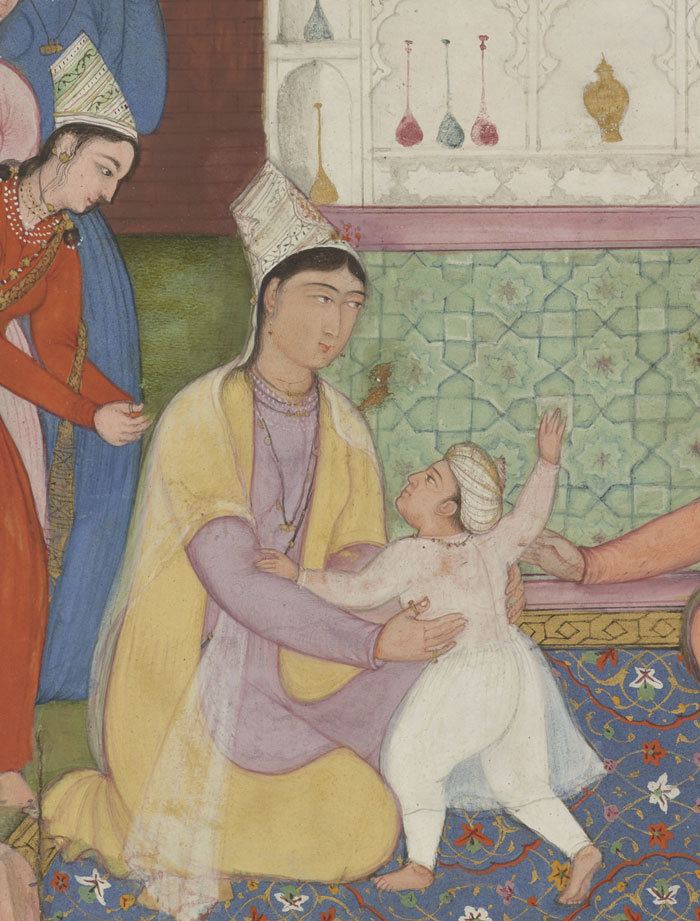
Arab Serai Gate, Humayun's Tomb
Family
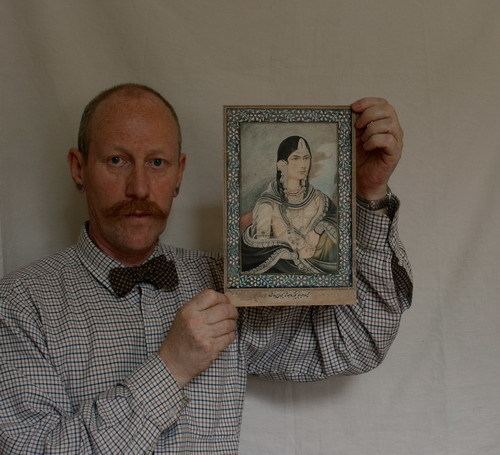
Hamida Banu Begum was born c. 1527 to Shaikh Ali Akbar Jami, a Persian Shia, who was a preceptor to Mughal prince Hindal Mirza, the youngest son of the first Mughal emperor Babur. Ali Akbar Jami was also known as Mian Baba Dost, who belonged to the lineage of Ahmad Jami Zinda-fil. Hamida Banu's mother was Maha Afroz Begum, who married Ali Akbar Jami in Paat, Sindh. As suggested by her lineage, Hamida was a devout Muslim.
Meeting with Humayun
She met Humayun, as a fourteen-year-old girl and frequenting Mirza Hindal's household, at a banquet given by his mother, Dildar Begum (Babur's wife and Humayun's step-mother) in Alwar. Humayun was in exile after his exodus from Delhi, due to the armies of Sher Shah Suri, who had ambitions of restoring Afghan rule in Delhi.
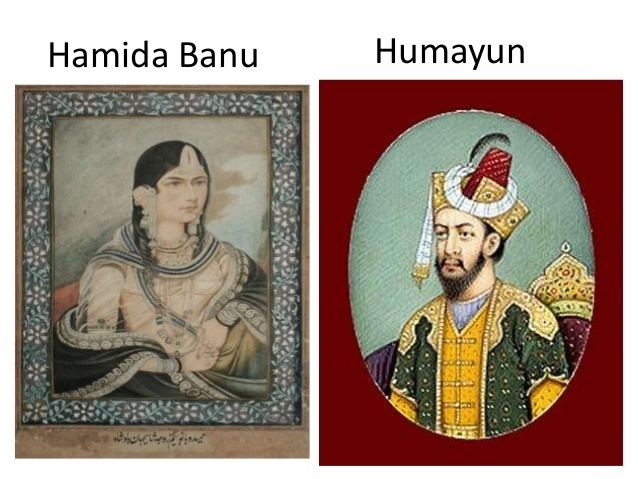
When negotiations for Humayun's marriage with Hamida Banu Begum were going on, both Hamida and Hindal bitterly opposed the marriage proposal, possibly because they were involved with each other. It is seems probable that Hamida was in love with Hindal, though there is only circumstantial evidence for it. In her book, the Humayun-nama, Hindal's sister and Hamida's close friend, Gulbadan Begum, pointed out that Hamida was frequently seen in her brother's palace during those days, and even in the palace of their mother, Dildar Begum.
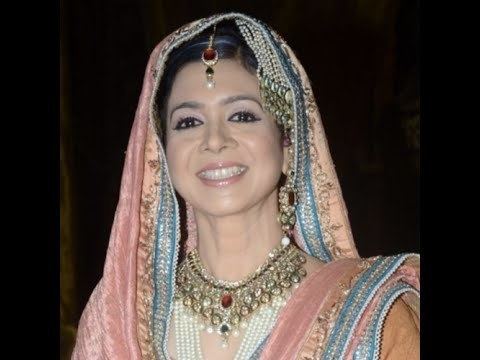
Initially, Hamida refused to meet the Emperor, eventually after forty days of pursuit and at the insistence of Dildar Begum, she agreed to marry him. She refers to her initial reluctance in the Humayunama,
Marriage
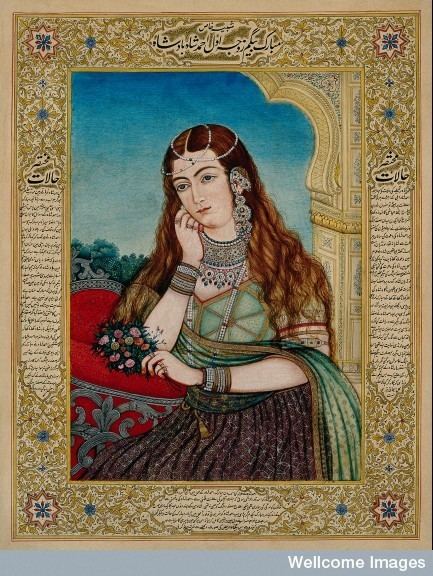
.
The marriage took place on a day chosen by the Emperor, an avid astrologer, himself employing his astrolabe, at mid-day on a Monday in September, 1541 (Jumada al-awwal 948 AH) at Patr (known as Paat, Dadu District of Sindh). Thus, she became his junior wife, after Bega Begum (later known as Haji Begum, after Hajj), who was his first wife and chief consort. The marriage became "politically beneficial" to Humayun as he got help from the rival Shia groups during times of war.
Two years later, after a perilous journey through the desert, on 22 August 1542, she and Emperor Humayun reached at the Umerkot ruled by Rana Prasad, a Hindu Sodha Rajput, at a small desert town, and the Rana gave them asylum. Two months later she gave birth future Emperor, Akbar on the early morning of 15 October 1542 (fourth day of Rajab, 949 AH), he was given the name Humayun had heard in his dream at Lahore – the Emperor Jalal-ud-din Muhammad Akbar.
In coming years, she took on numerous tough journeys to follow her husband, who was still in flight. First the beginning of the following December she and her new born went into camp at Jūn, after traveling for ten or twelve days. Then in 1543, she made the perilous journey from Sindh, which had Qandahar for its goal, but in course of which Humayun had to take hasty flight from Shal-mastan, ‘through a desert and waterless waste.’ Leaving her little son behind, she accompanied her husband to Persia, here they visited the shrines of her ancestor, Ahmad-e Jami and Shiites shrine, of Ardabil in Iran, the place of origin of Safavid dynasty which helped them immensely in the following years. In 1544, at a camp at Sabzawar, 93 miles south of Herat, she gave birth to a daughter, thereafter she returned from Persia with the army given to Humayun by Shah of Iran, Tahmasp I, and at Kandahar met Dildar Begum, and her son, Mirza Hindal. Thus, it was not until 15 November 1545 (Ramdan 10th, 952 AH) that she saw her son Akbar again, the scene of young Akbar recognizing his mother amongst a group of women has been keenly illustrated in Akbar's biography, Akbarnama. In 1548, she and Akbar accompanied Humayun to Kabul.
Akbar's reign
During the reign of Akbar, there are many instances where, imperial ladies interfered in matters of the court to ask pardon for a wrong doer. Though once Hamida Banu and her daughter-in-law, Ruqaiya Sultan Begum (Akbar's chief wife), did so, their pleas went to deaf ears as Akbar refused to forgive a Sunni Muslim from Lahore who had killed a Shia Muslim, purely out of religious fanaticism.
Meanwhile, Sher Shah Suri died in May 1545, and after that his son and successor, Islam Shah died too in 1554, disintegrating the Suri dynasty rule. In November 1554, when Humayun set out for India, she stayed back in Kabul. Though he took control of Delhi in 1555, he died within a year of his return, by falling down the steps of his library at Purana Qila, Delhi, in 1556 at the age of 47, leaving behind a thirteen-year-old heir, Akbar, who was to become one of greatest emperors of the empire. Hamida Banu joined Akbar from Kabul, only during his second year of reign, 1557 CE, and stayed with him thereafter, she even intervened into politics on various occasions, most notable during the ouster of Mughal minister, Bairam Khan, when Akbar came of age in 1560.
Death and aftermath
She was buried at Humayun's Tomb after her death on 29 August 1604 (19th Shahriyar, 1013 AH) in Agra, just a year before the death of her son Akbar and almost half a century after death of her husband, Humayun. Throughout her years, she was held in high regard by her son Akbar, as English traveler Thomas Coryat recorded, Akbar carrying her palanquin himself across the river, during one of her journeys from Lahore to Agra. Later when Prince Salim, future emperor Jahangir, revolted against his father Akbar, she took upon the case of her grandson, and a reconciliation ensued thereafter, even though Salim had plotted and got Akbar's favorite minister Abu'l-Fazl killed. Akbar shaved his head and chin only on two occasions, one at the death of foster-mother Jiji Anga and another at the death of his mother.
She was given the title, Maryam-makānī, dwelling with Mary, posthumously, as she was considered, 'epitome of innocence' by Akbar. Details of her life are also found in Humayun Nama, written by Gulbadan Begum, sister of Humayun, as well as in Akbarnama and Ain-i-Akbari, both written during the reign of his son, Akbar.
In popular culture
In Jodhaa Akbar, a 2008 Indian epic film, directed by Ashutosh Gowariker, the character of Hamida Bano was portrayed by Poonam Sinha. Previously in Hindi epic film Humayun (1945) directed by Mehboob Khan, her role was portrayed by actor, Nargis.
